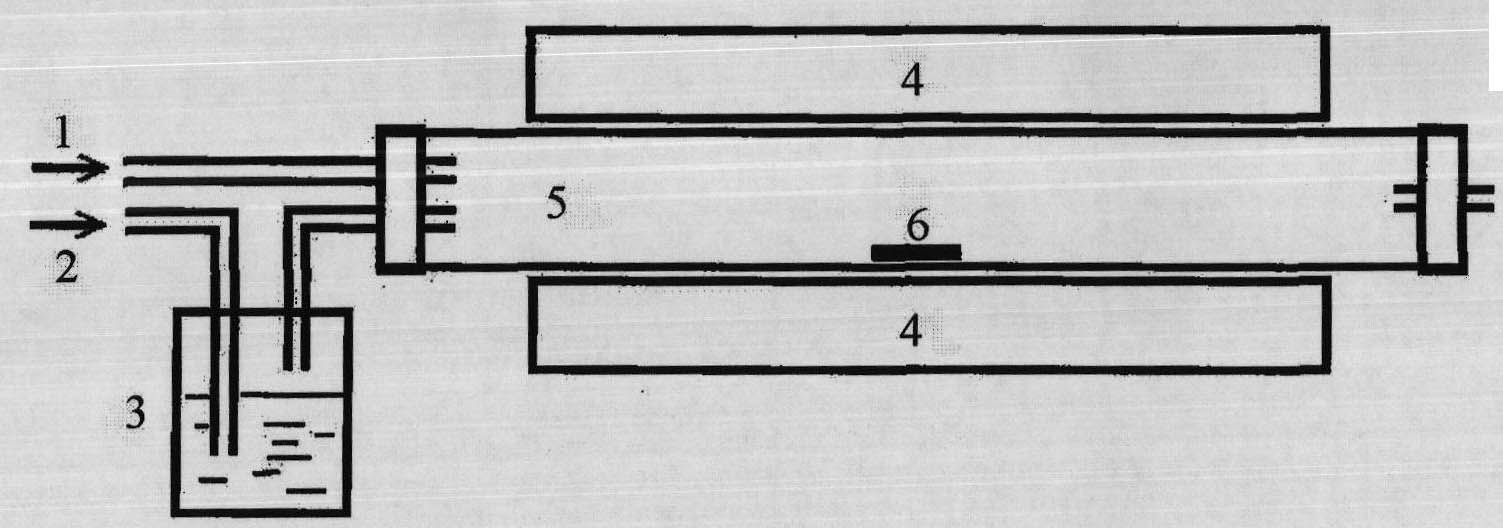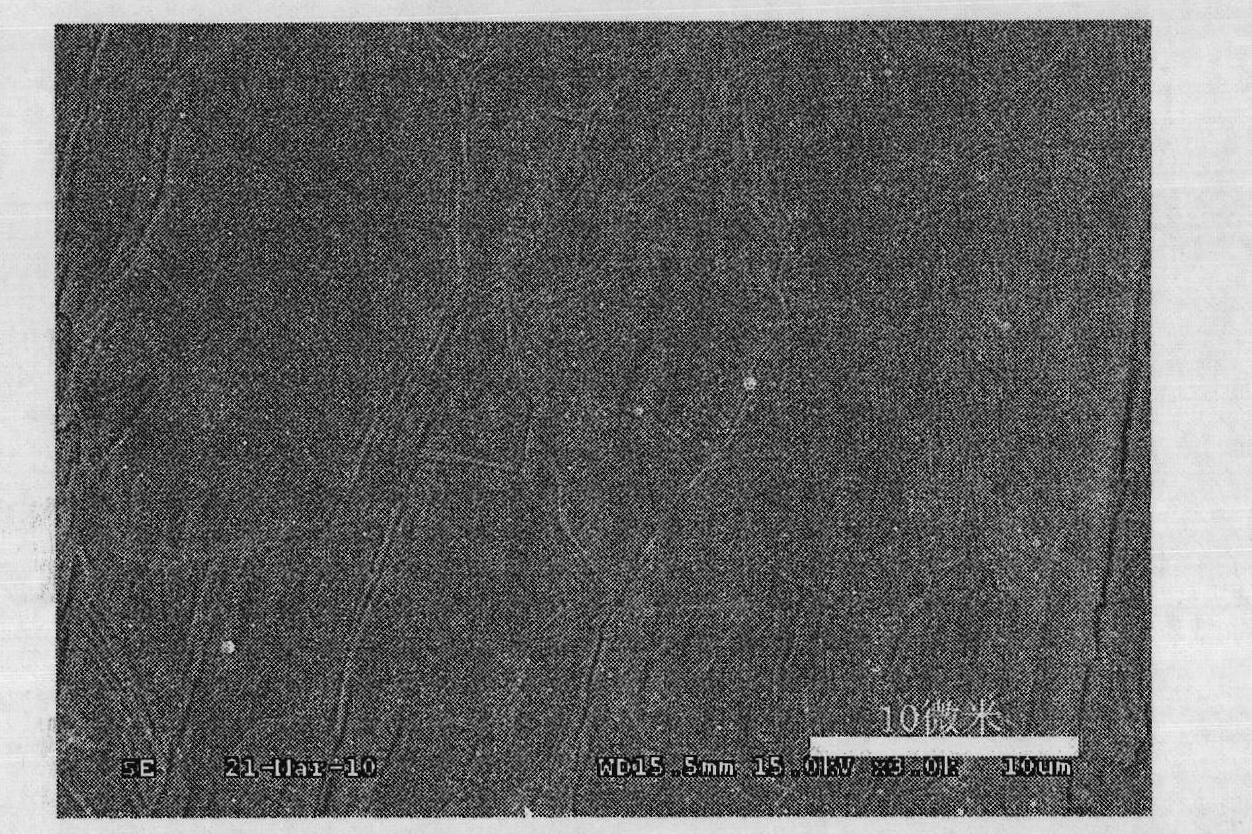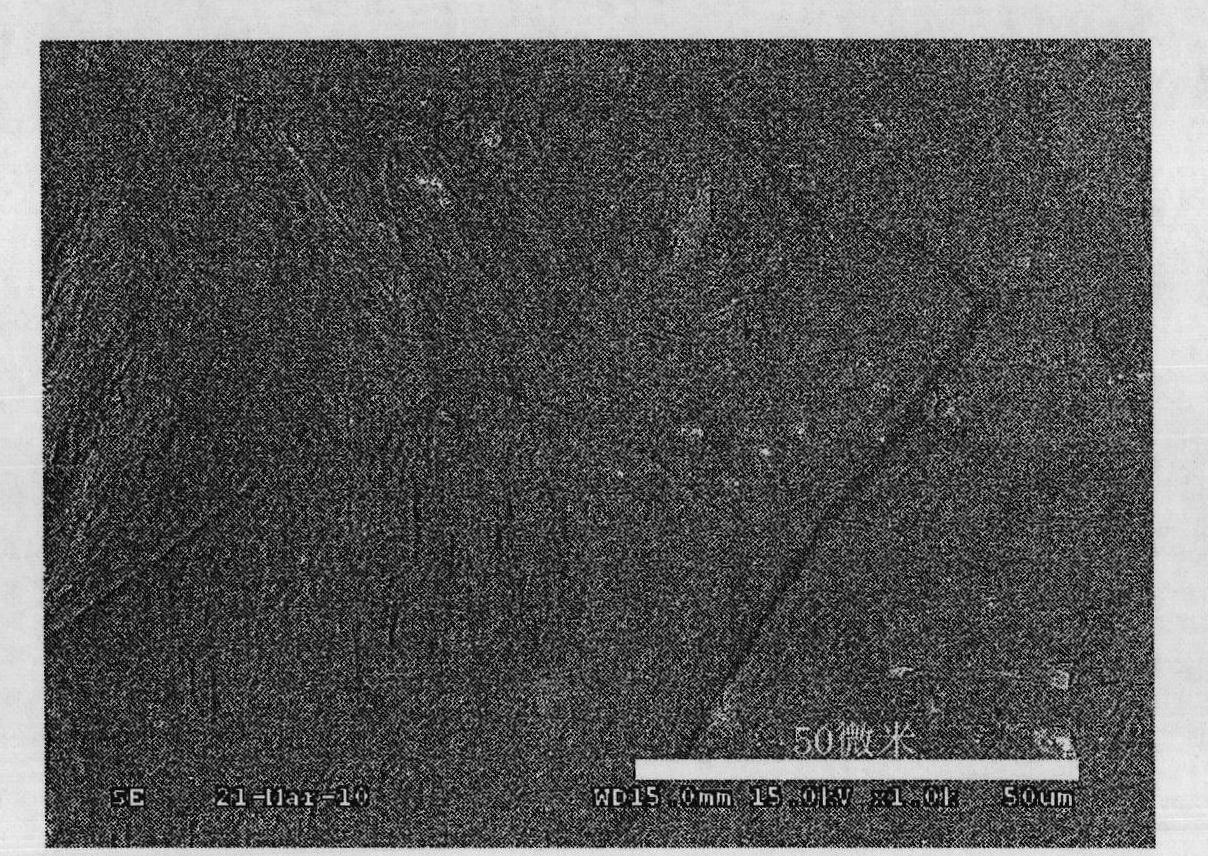Method for preparing large-area high quality graphene on iron-based substrate
A graphene, elemental iron technology, applied in gaseous chemical plating, metal material coating process, coating and other directions, can solve problems such as unreported, achieve the effect of convenient operation and less defects
- Summary
- Abstract
- Description
- Claims
- Application Information
AI Technical Summary
Problems solved by technology
Method used
Image
Examples
Embodiment 1
[0035] Embodiment 1, prepare graphene on iron-based substrate
[0036] Step 1: Clean the iron foil sequentially with deionized water, ethanol, and acetone ultrasonically, then dry it in an oven, then put it into the quartz tube of the chemical vapor deposition system, align the center of the high-temperature furnace with the iron foil, and then repeatedly pump The vacuum completely removes the air in the furnace. Through 100sccmH 2 And 100sccmAr mixed gas as carrier gas, after ventilating for 60 minutes, start heating.
[0037] Step 2: When the temperature in the central area of the furnace reaches 750°C, methane is introduced into the quartz tube as a carbon source, and the reaction begins.
[0038] The third step: stop feeding methane after the reaction is carried out for 10 minutes, close the high-temperature furnace at the same time, and continue feeding 100 sccmH 2 And the mixed gas of 100sccm Ar is down to room temperature to temperature, and the scanning electron mic...
Embodiment 2
[0040] Embodiment 2, prepare graphene on iron-based substrate
[0041] The preparation method is basically the same as in Example 1, except that the first step is to spin-coat PMMA on the surface of the iron foil used as a carbon source and then dry it in an oven. The temperature used for the synthesis of graphene in the second step is 900 ° C. There is no need to re-feed methane as a carbon source. Scanning electron microscopy of its products as image 3 As shown, a two-dimensional film-like structure with wrinkles, illustrated as graphene, can be observed from the figure.
Embodiment 3
[0042] Embodiment 3, prepare graphene on iron-based substrate
[0043] The preparation method is basically the same as in Example 1, and the difference is that the catalyst used is an iron block, and the temperature used for synthesizing graphene is 800 ° C, and the scanning electron microscope photo of its product is as follows: Figure 4 As shown, a two-dimensional film-like structure with wrinkles, illustrated as graphene, can be observed from the figure.
PUM
 Login to View More
Login to View More Abstract
Description
Claims
Application Information
 Login to View More
Login to View More - R&D
- Intellectual Property
- Life Sciences
- Materials
- Tech Scout
- Unparalleled Data Quality
- Higher Quality Content
- 60% Fewer Hallucinations
Browse by: Latest US Patents, China's latest patents, Technical Efficacy Thesaurus, Application Domain, Technology Topic, Popular Technical Reports.
© 2025 PatSnap. All rights reserved.Legal|Privacy policy|Modern Slavery Act Transparency Statement|Sitemap|About US| Contact US: help@patsnap.com



